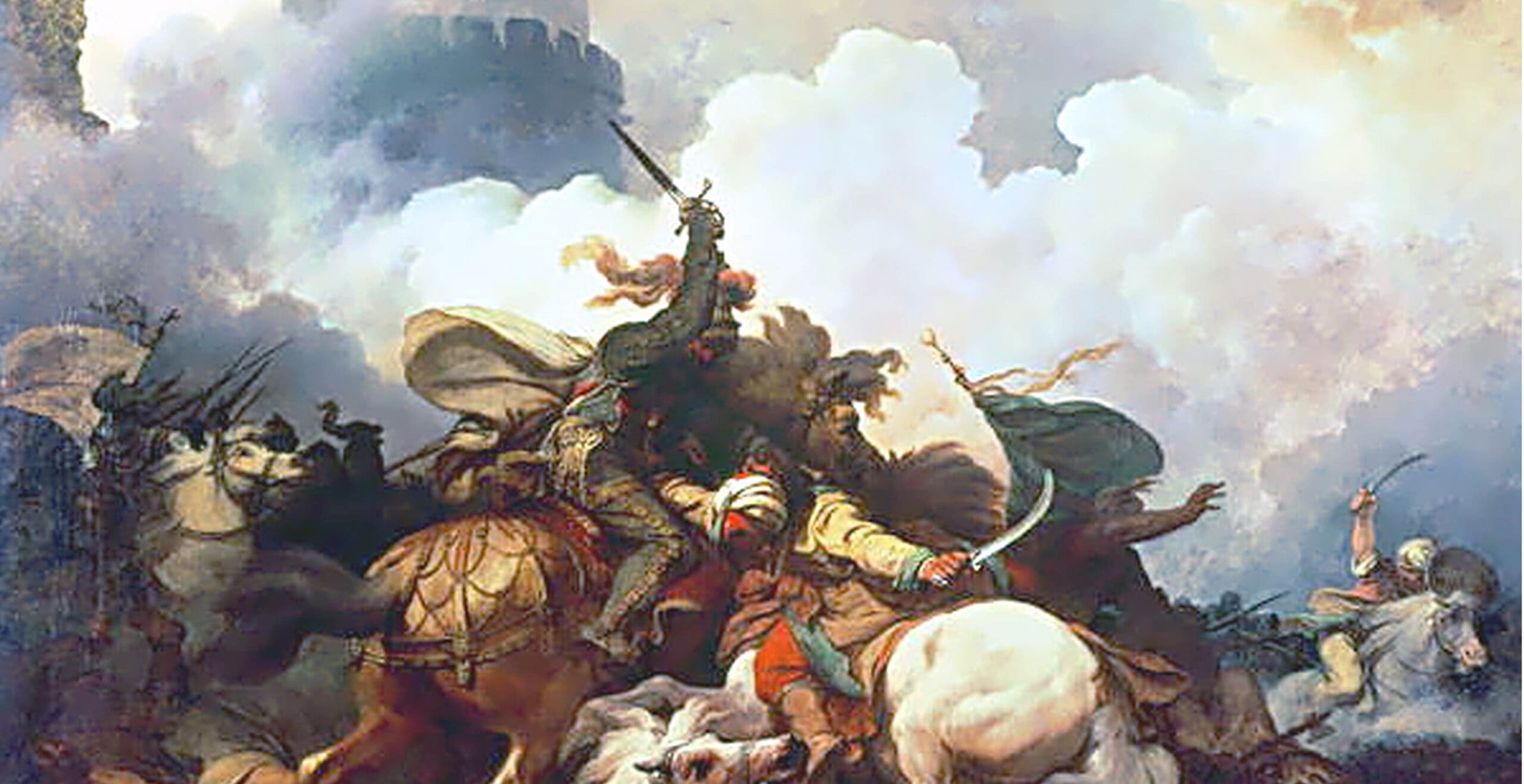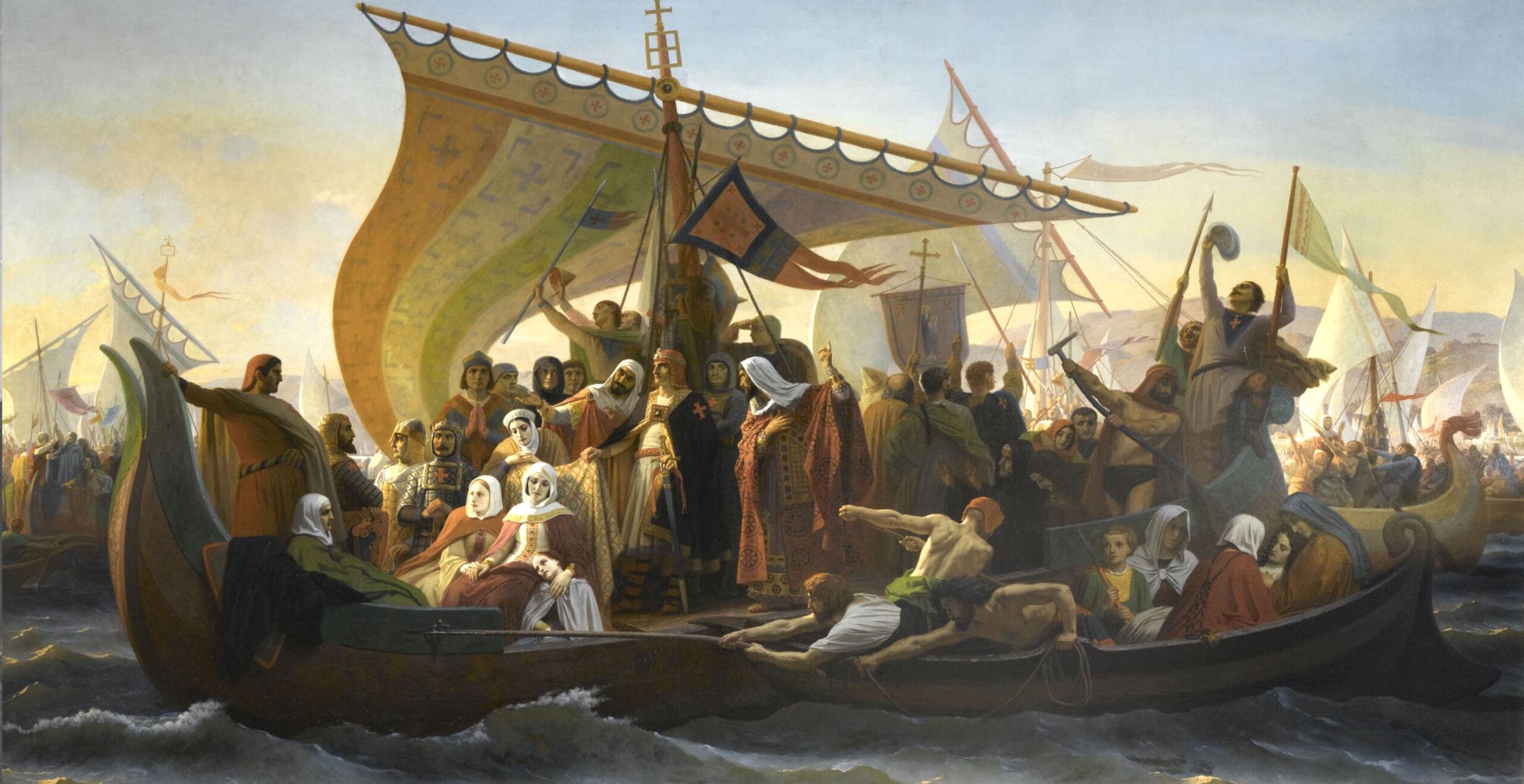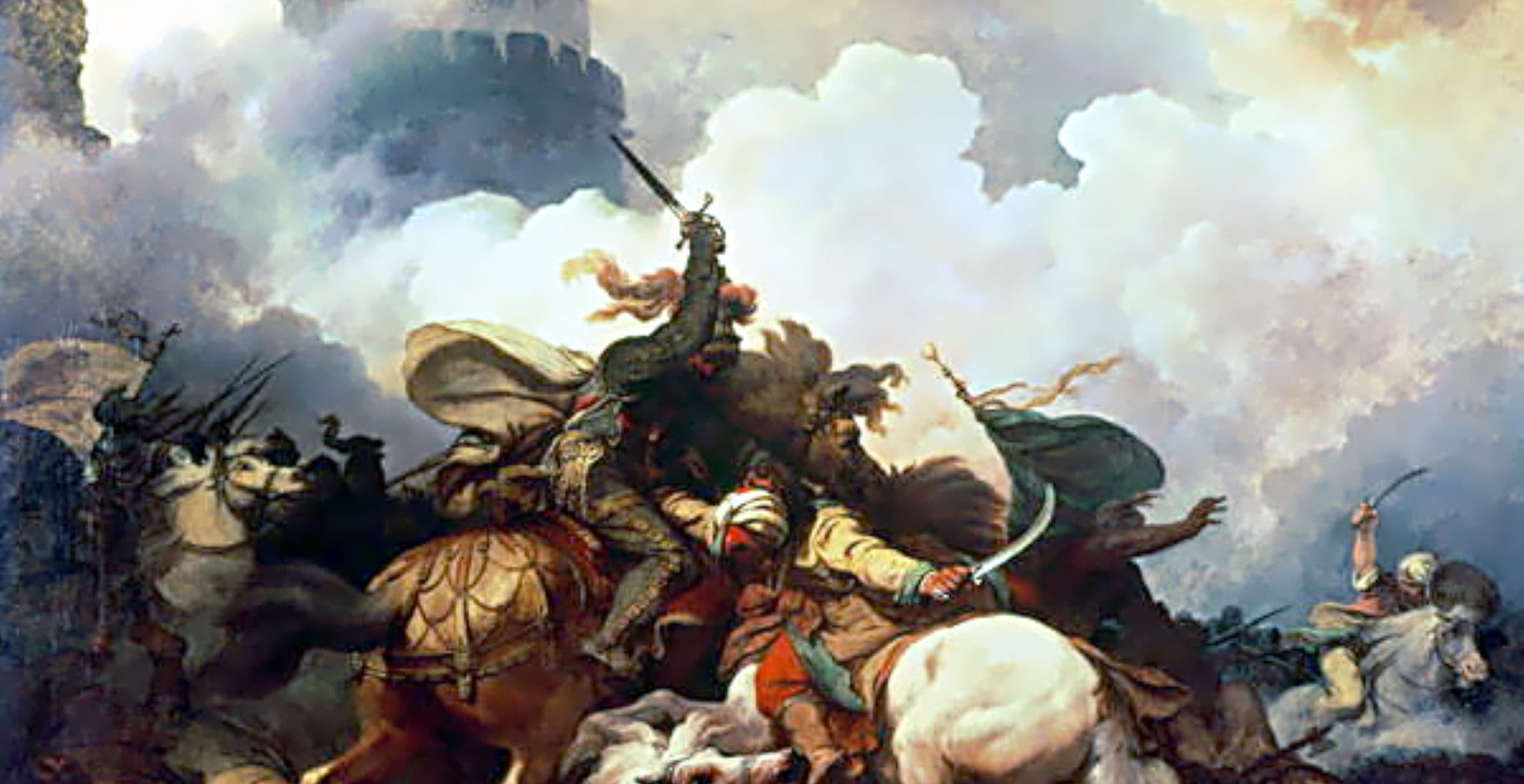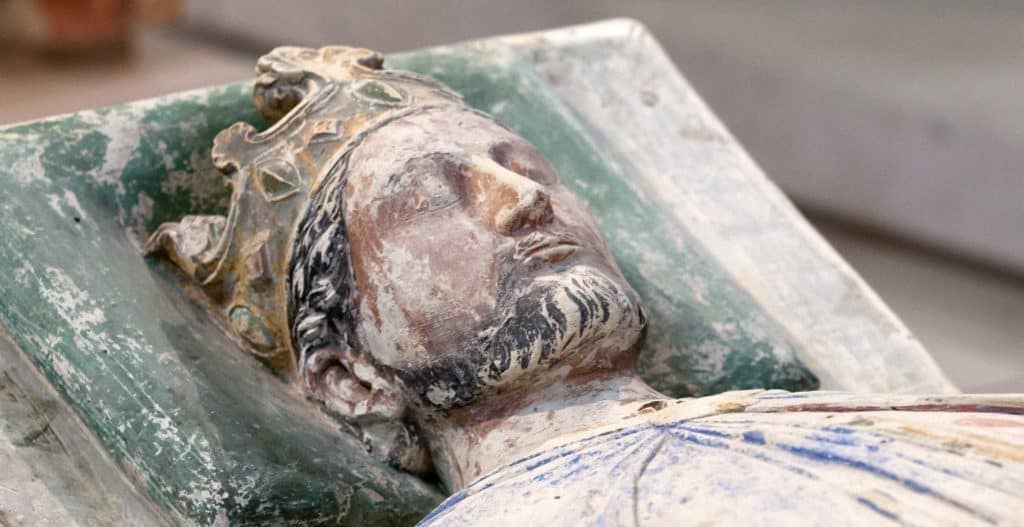638 – Jerusalem is captured by the Caliph Omar.
April 1081 – Aug 1118- Reign of Byzantine Emperor Alexios I Komnenos.
1088 – 1099 – Reign of Pope Urban II.
March 1095 – Byzantine Emperor Alexios I Komnenos appeals to the Christian community at the Council of Piacenza for help against the Seljuks.
27 November 1095 – Pope Urban II calls for the First Crusade with the goal of retaking Jerusalem.
His speech takes place at the Council of Clermont which was held for ten days and attended by around 300 clerics to discuss ecclesiastical matters and reforms. On the last day, in response to Alexios I Komnenos pleas for assistance, Pope Urban II launches a rallying cry to the Christian community and a call to arms which results in the First Crusade.
1096 – The First Crusade is formed to recapture Jerusalem for Christendom. The mission is taken up by two groups of crusaders. The first was an informal band of brothers called the “People’s Crusade” made up of untrained peasantry from across Europe and led by Peter the Hermit and Walter the Penniless. The second force was comprised of official fighters, also known as the “Princes’ Crusade” it was led by nobility such as Raymond of Toulouse and Bohemond of Taranto, with better financing, training and equipment.
March 1096 – The people’s army led by Peter the Hermit heads to Constantinople.
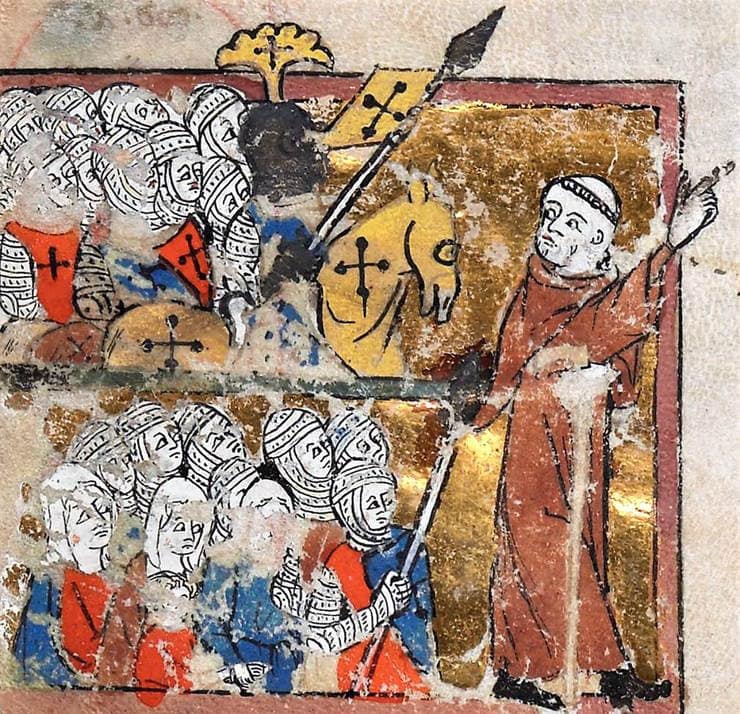
21 October 1096 – The “People’s Crusade” is annihilated by Seljuk army near Nicaea.
1097 – The Crusaders arrive at Constantinople.
1097 – The Crusaders capture Nicaea.
1 July 1097 – A Crusader army wins a great victory against a Muslim army at Dorylaion .
March 1098 – Edessa captured. Baldwin of Boulogne takes control and forms the County of Edessa.
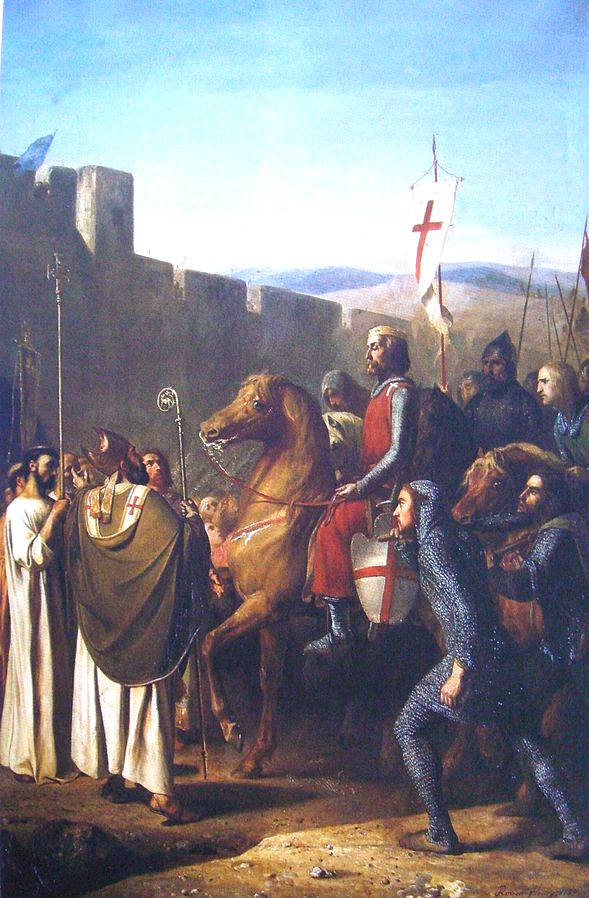
3 June 1098 – Antioch captured by the Crusaders bringing an end to the eight month long siege.
28 June 1098 -The Crusaders fight off counter-attack by Muslim army wanting to recapture Antioch.
7 June 1099 – The Crusader army arrives to its final destination, Jerusalem.
17 June 1099 – Arrival of much needed supplies at Jaffa for arming Crusaders with siege weaponry at Jerusalem.
10 July 1099 – Siege warfare underway. Towers are built by the Crusaders to attack Jerusalem.
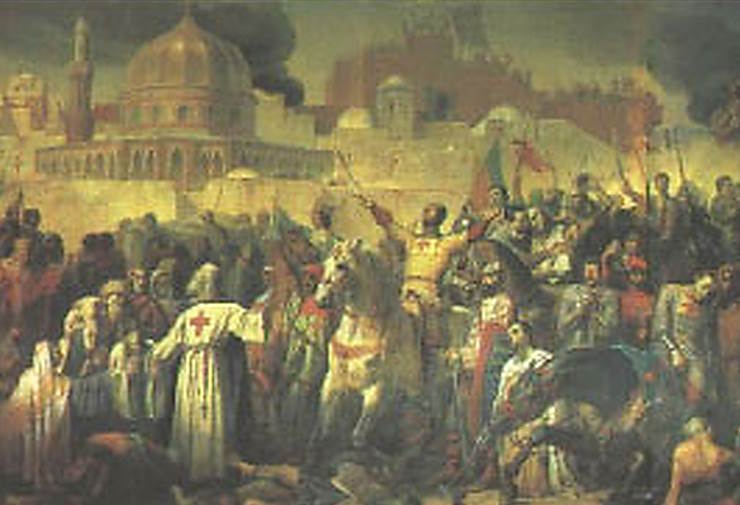
15 July 1099 – Jerusalem is captured during the First Crusade.
10 August 1099 – Battle of Ascalon. The Crusaders led by Godfrey of Bouillon defeat the Fatimid army and its attempts to recapture Jerusalem. With the Muslim forces repelled, the battle marks an end to the fighting and the conclusion of the First Crusade.
September 1099 – The Kingdom of Jerusalem is created.
The First Crusade goal is accomplished.
17 May 1101 – Caesarea is captured by the Crusaders.
26 May 1101 – Acre is captured by the Crusaders.
1113 – The formation of the Knights Hospitallers as a religious order as ordained by Pope Paschal II.
1119 – The formation of the Knights Templar military order.
24 December 1144 – Imad ad-Din Zangi and his men capture Edessa.
1 December 1145 – Pope Eugenius III calls for the Second Crusade.
1147 – Launch of the Second Crusade in response to the fall of the County of Edessa which had been founded by King Baldwin I of Jerusalem in 1098.
Pope Eugenius III makes the announcement of the Second Crusade which was to be led, for the first time by European kings, Louis VII of France and Conrad of Germany. Islamic forces led by Zangi’s son, Nu red-Din.
1147 – Launch of the Reconquista in Spain.
June 1147 – The siege of Lisbon during the Second Crusade brought the city of Lisbon under the definitive Christian control.
September 1147 – Oct 1147-The armies of the Second Crusade arrive in Constantinople.
21 October 1147 – The capture of Lisbon by the Crusaders ending the siege.
25 October 1147 – At Dorylaion a force of Muslim Seljuk Turks attacks an army led by Conrad III.
December 1147 – Crusader victory over Seljuk army in Asia Minor. Led by Louis VII.
7 January 1148 – Crusader defeat at the hands of the Seljuks during crossing of Cadmus Mountains.
24 July 1148 – 28 July 1148- The unsuccessful siege of Damascus.
September 1148 – Conrad III returns home to Europe.
29 June 1149 – The Muslim Seljuk leader Nur al-Din captures Antioch which was previously held by the Crusaders.
1149 – End of the Second Crusade.
1174 – 1193- Reign of Saladin, Sultan of Egypt and Syria and the founder of the Ayyubid dynasty. After the failures of the Second Crusade, the Zengid dynasty of Syria and the Fatimid rulers of Egypt were brought under Saladin’s control.
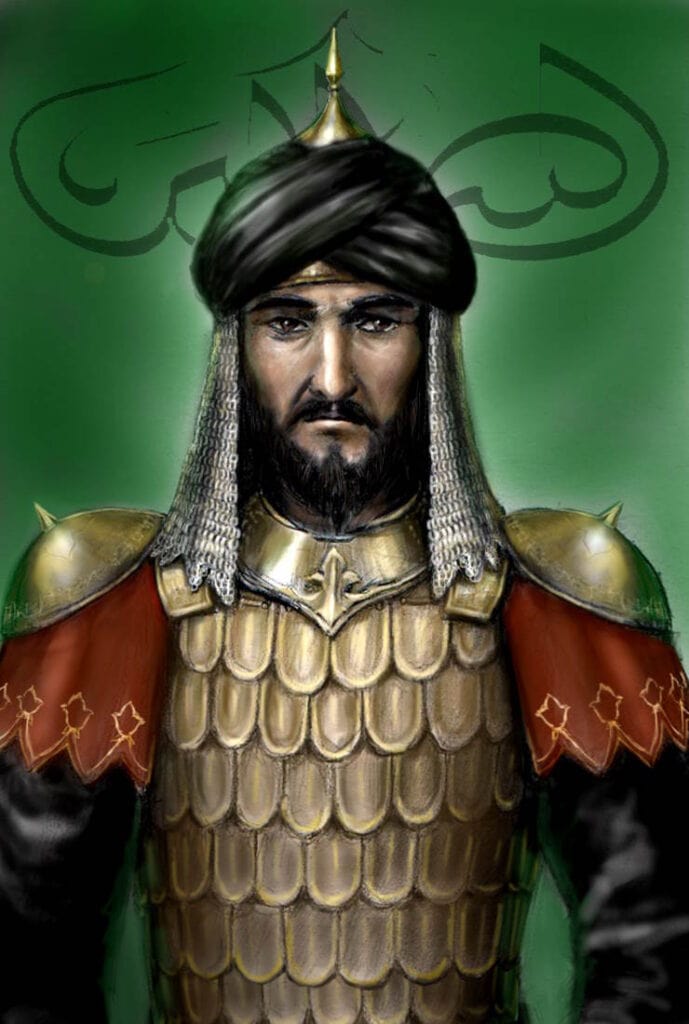
1186 – 1192 – Guy of Lusignan reigns as King of the Kingdom of Jerusalem.
3 July 1187 – Battle of Hattin. Saladin defeats the Franks army.
October 1187 – Jerusalem falls to Saladin who now has a mighty combined fighting force.
Pope Gregory VIII calls for the Third Crusade to recapture Jerusalem. Three European monarchs comprised of Richard I of England, Philip II of France and the Holy Roman Emperor Frederick I lead the charge to capture the Holy City, for this reason the Third Crusade is also known as the Kings’ Crusade.
August 1189 – The Siege of Acre. This was the first significant counterattack by the Crusaders against Saladin. The siege lasted until July 1191.
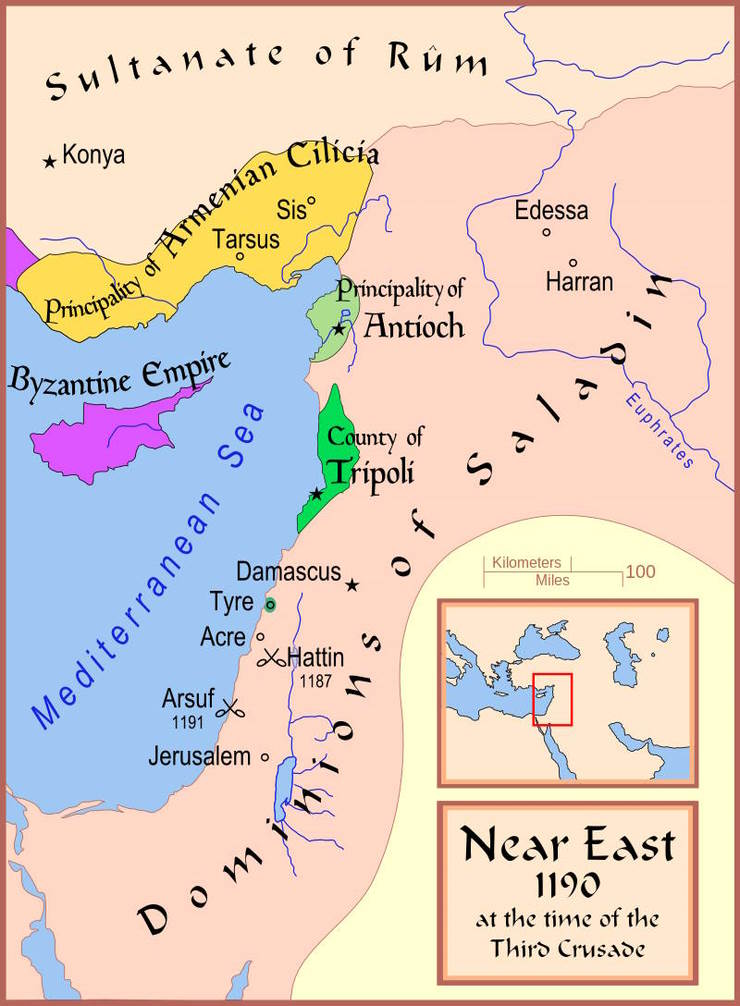
10 June 1190 – Frederick I dies leading his army in Cilicia.
May 1191 – Cyprus falls to Richard I. The island of Cyprus was taken from Isaac Komnenos, the local governor and self-proclaimed emperor of the Byzantine Empire.
12 Jul 1191 – King Richard I of England captures Acre and ends the siege.
20 Aug 1191 – Richard I of England orders the execution of 2,500 Muslim prisoners after the siege of Acre during the Third Crusade.
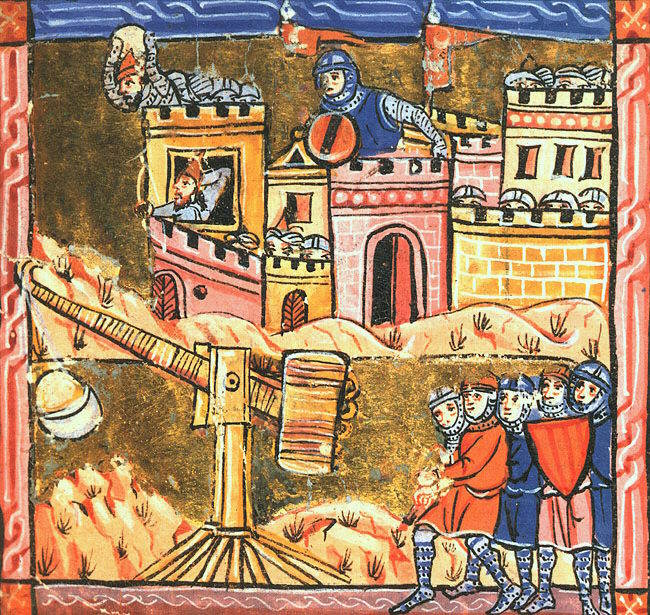
August 1191 – Philip II leaves Acre and returns to France.
King Richard now solely in charge of extensive Crusading army.
7 September 1191 – Battle of Arsuf. Ends in victory for Richard and the Crusaders.
Richard keen to capitalise on his success at Acre, leads his men southwards towards the port of Jaffa. On his way he is shadowed by Saladin’s forces who intercept the army at Arsuf. Nevertheless, Richard and his men maintain their line and inflict defeat on the Muslim forces, representing a significant morale boosting victory for the new warrior king from England and a humiliation for Saladin.
January 1192 – Richard and his army arrive at Jerusalem but decide against launching an attack.
27th July 1192 -Saladin takes Jaffa which had been a critical fortified base for Richard and his forces.
The garrison which had been left in defence of the town eventually succumbs to the mighty force of Saladin’s army after a three day resistance filled with bloodshed.
August 1192 – News of Saladin’s capture of Jaffa reaches Richard I just in time. Richard I of England launches his counter-attack and leads his men into battle, successfully retaking Jaffa from Saladin.
This hard fought battle concludes the Third Crusade and ends in a peace treaty.
2nd September 1192 – The Treaty of Jaffa. Agreement recognises Muslim control over Jerusalem but allows Christian pilgrims to travel safely to the Holy Land.
By the time the treaty came into effect, Richard had already been taken ill with a serious but mysterious disease known as arnaldia.
End of the Third Crusade.
9th October 1192 – Richard I of England leaves Acre and sets off on his return journey home to England.
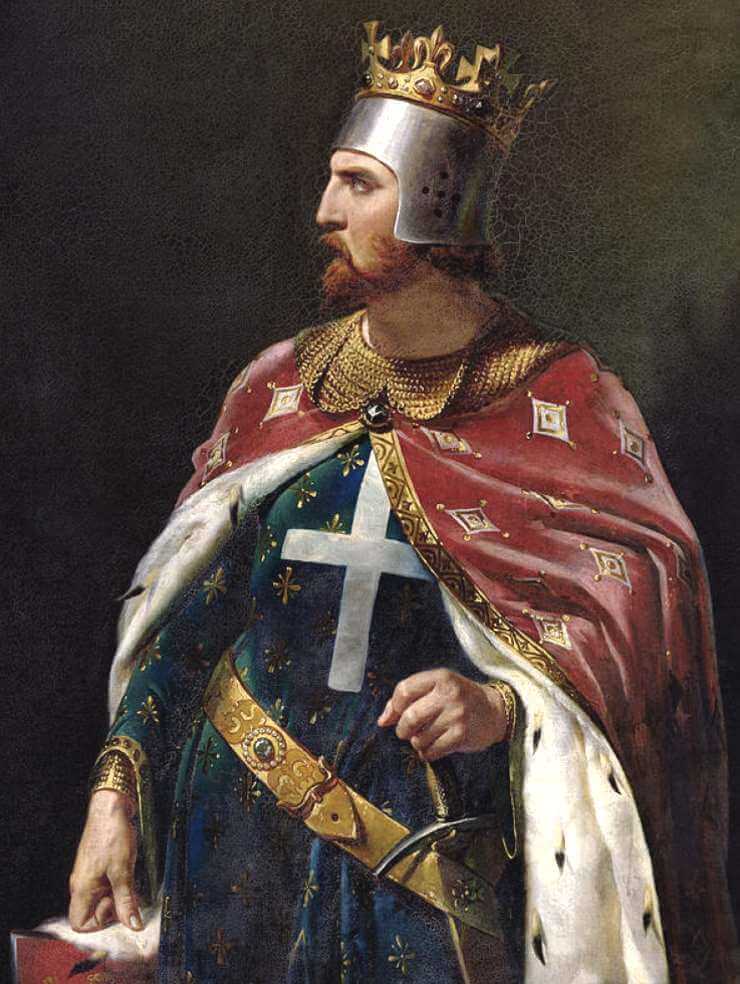
December 1192 – Richard is captured and imprisoned by Leopold V, Duke of Austria who is keen to enact his vendetta against Richard whom he blames for the murder of Conrad of Montferrat.
King Richard is kept by Leopold at Dürnstein Castle.
March 1193 – Richard finds himself transferred from the castle to Spreyer where the Holy Roman Emperor Henry VI places him in Trifels Castle and demands a large ransom.
4 March 1193 – Saladin dies. King Richard I’s most powerful rival.
4th February 1194 – Richard is released from his incarceration.
Richard’s freedom has a large price as well as the ransom money, more interest was paid and he is also forced to pledge an allegiance to Henry.
1194 – Richard returns to England.
He is crowned as King of England for a second time in the spring of 1194 and then leaves for Normandy.
August 1198 – Pope Innocent III calls for the Fourth Crusade to liberate Jerusalem from Muslim rule.
1199 – King Richard I dies from a crossbow wound after laying siege to the castle of Châlus.
August 1201 – Marquis Boniface of Montferrat is selected to lead the Crusade.
1202 – The Fourth Crusade finally gets under way, four years after its proclamation by Pope Innocent III.
10 November 1202 – Zara laid siege by the Crusaders and taken from the Hungarians on the Dalmatian Coast.
This was the first attack against a fellow Christian city by the Crusaders.
Zara (Zadar) was a constant battleground between Venice on one side and Croatia and Hungary on the other, whose king, Emeric, pledged himself to join the Crusade.
Pope Innocent III forbids such an action and threatens excommunication however the attack goes ahead anyway and Zara falls on 24 November.
12 April 1204 – Constantinople sacked by the Crusaders.
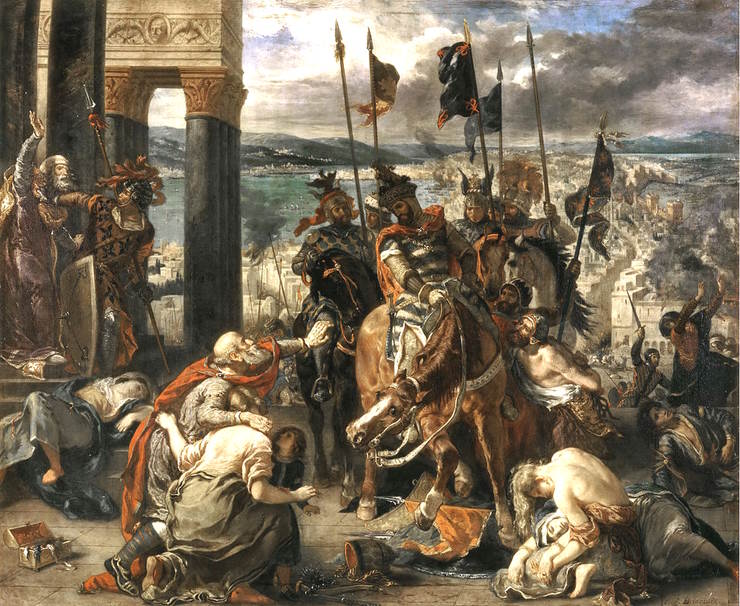
The Crusader armies desecrate the city as they loot, vandalise and destroy parts of the capital. After the capture of the city, most of the Byzantine Empire’s territories are divided up among the Crusaders.
9 May 1204 – Count Baldwin of Flanders as a result is made the first Latin Emperor of Constantinople and crowned in the Hagia Sophia.
End of the Fourth Crusade.
1212 – The Children’s Crusade. An unofficial Crusade as it never received papal approval. Nicholas of Cologne, and Stephen of Cloyes of Northern France who lead their peers to form a band of child crusaders. Some who marched across the Alps to arrive in Rome even had an audience with the Pope.
Sadly, many did not survive the journey. Some would decide to stay on in Italy to make their fortunes whilst many of the French children found themselves exploited by William the Pig and Hugh the Iron who sold them into slavery and sent them on to Tunis.
1215 – Pope Innocent III calls for the Fifth Crusade.
After the failure of the Fourth Crusade, Pope Innocent III begins organising armies led by Andrew II of Hungary and Leopold VI of Austria, soon to be joined by John of Brienne, titular King of Jerusalem.
The plan is to conquer Egypt which is ruled by the powerful Ayyubid sultanate, led by al-Adil, Saladin’s brother.
1218 – The Fifth Crusade mission to attack cities in North Africa.
Cardinal Pelagius Galvani arrives as papal legate and de facto leader of the Crusade, supported by the Templars, Hospitallers and Teutonic Knights.
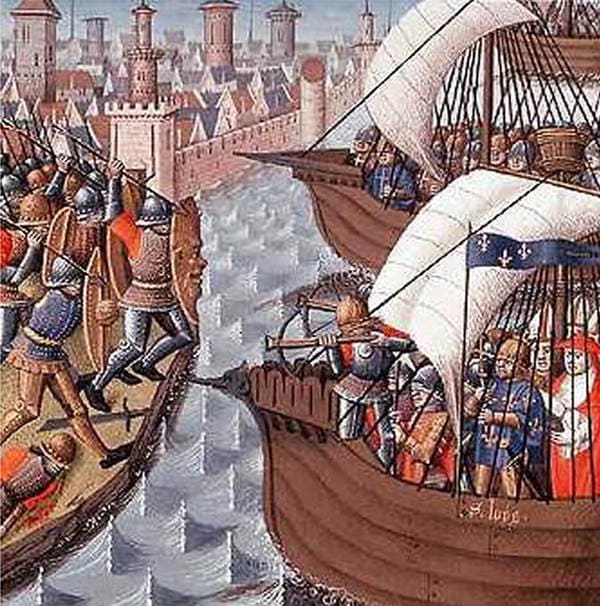
23 June 1218 – 5 November 1219 – Siege of Damietta results in Crusaders successfully taking the city.
The plan is to use the city as a critical staging post before the next stage of their mission to move on to Jerusalem.
Infighting and inactivity awards their Muslim foes the advantage as they find a new base at al-Mansura.
31 August 1218 – Sultan of Egypt Al-Adil dies, and his son, Al-Kamil replaces him.
28 August 1221 – Crusader army fail in their attack at al-Mansura and are forced to surrender. The result is a definitive win for the Egyptians which forces the Crusaders to leave Egypt.
September 1221 – The Crusaders surrender Damietta and agree to an eight year truce in exchange for allowing the Crusader army to pass and free the prisoners of war.
The war ends and the Crusaders return to Europe having achieved nothing for their efforts.
End of the Fifth Crusade.
25 July 1225 – The Agreement of San Germano between Frederick II and Honorius.
Frederick promises to depart on the Crusade by 15 August 1227 and remain for two years. The objective was to conquer Jerusalem with Frederick II leading the charge.
1227 – Pope Honorius dies.
The new Pope Gregory IX enters the curia and is intent on Frederick meeting the terms of his agreement.
August 1227 – First contingent departs and arrives in Syria in October.
1226 –1227 – Frederick negotiates with al-Kamil.
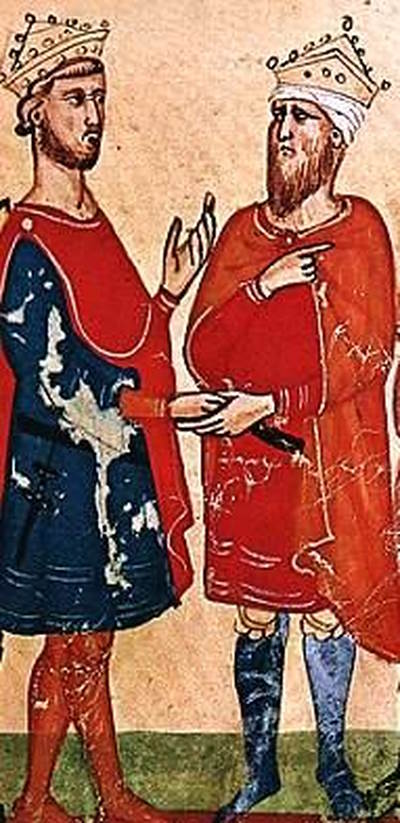
September 1227 – The second instalment of the crusading army departs, including English participants.
November 1227 – Frederick is excommunicated by Gregory IX.
June 1228 – Frederick finally sets sail.
1228 – The Sixth Crusade. Under the ambitious leadership of the Holy Roman Emperor Frederick II who is keen to see his personal power restored.
7 September 1228 – Frederick II arrives in the Levant.
18 Feb 1229 – The Treaty of Jaffa. Diplomatic arrangement between Frederick II and al-Kamil which involves a ten-year truce.
Frederick II realises that if he was to achieve his goals, diplomacy rather than military might was the best strategy to employ.
The agreement is ratified and witnessed by the English bishops Peter des Roches and William Briwere.
The treaty recognises the Christian possession of Acre, Jaffa, Nazareth, Sidon and Toron thus restoring the city of Jerusalem and a few other territories to the Kingdom of Jerusalem, whose king was Frederick’s infant son Conrad.
1230 – Emperor Frederick II returns to Europe demonstrating that success could be achieved without military intervention.
End of the Sixth Crusade.
12 August 1248 – Louis IX leaves Paris.
1248 -The Seventh Crusade is formed to attack Muslim-held cities in North Africa and Egypt. Led by Louis IX.
17 September 1248 – Louis IX arrives in Cyprus.
June 1249 – The Crusading army lands in Egypt.
June 1249 – The Crusading army captures Damietta in Egypt.
20 November 1249 – The army marches to Cairo.
5 April 1250 – The army is defeated at al-Mansura. Louis IX is captured.
6 May 1250 – Louis IX, leader of the Seventh Crusade, is released by his captors, the Ayyubid Dynasty.
The Seventh Crusade ends.
Louis stays on for four more years in Palestine before heading home.
1256 – Trade wars ignite between Genoa and Venice.
1258 – Mongols sack Baghdad.
1260 – The Mongols capture Damascus.
3 September 1260 – Battle of Ain Jalud is fought between the Bahri Mamluks of Egypt and the Mongol Empire.
The Mongols defeated by the Mameluks, the first time a Mongol advance was permanently forced back.
1270 – The Eighth Crusade is formed to attack Muslim-held cities in North Africa. Led by Louis IX.
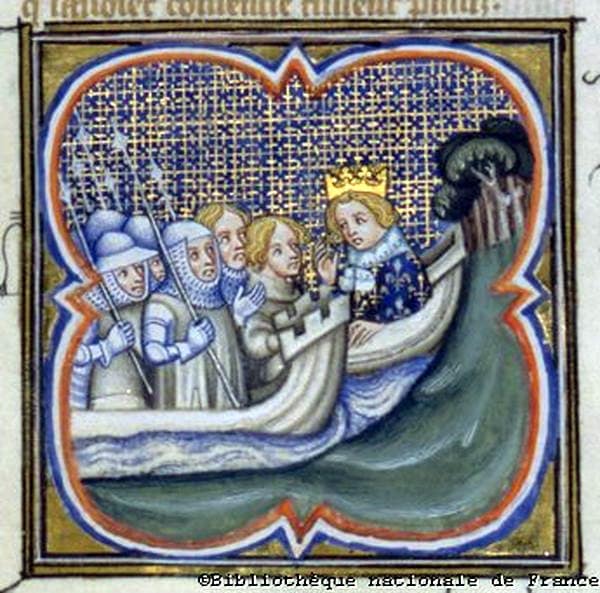
July 1270 – The Crusading army lands at Tunis in North Africa.
25 August 1270 – Louis IX dies of dysentery at Tunis during the Eighth Crusade. It is subsequently abandoned.
November 1270 – Troops disbanding led by Charles of Anjou. Caught up in a storm with many lives lost.
End of the Eighth Crusade.
18 May 1291 – Acre, the last Christian stronghold in the Middle East, falls to the Mamluks.
With the fall of Acre, the Crusader States, including the Kingdom of Jerusalem, are absorbed into the Mamluk Sultanate.
1291 – The last remaining Christian territory fall into Islamic hands.
END OF THE CRUSADES
Whilst the Crusades finally came to an end after centuries of conflict, Islamic and Christian relations would remain permanently altered by the strain of decades of military and diplomatic provocation. Countless lives were lost and the chasm between East and West remained as fragile and precarious as ever.
The memory of the Crusades would live on in fantastical story-telling, becoming the stuff of legends with ferocious characters evoking an era of chivalry and bravery.
Today, the word still has great significance, denoting a vigorous campaign for change (whatever form that takes).
The Crusades would have a defining impact not only on generations of men who fought, died and survived the battles but for later generations with no memory of such events. The Crusades are evocative of a mentality of us vs them, good vs bad and provokes in much the same way the feeling of resentment, righteousness and justification for violence which the modern world still grapples with today.
Jessica Brain is a freelance writer specialising in history. Based in Kent and a lover of all things historical.
Published 16th July 2023
